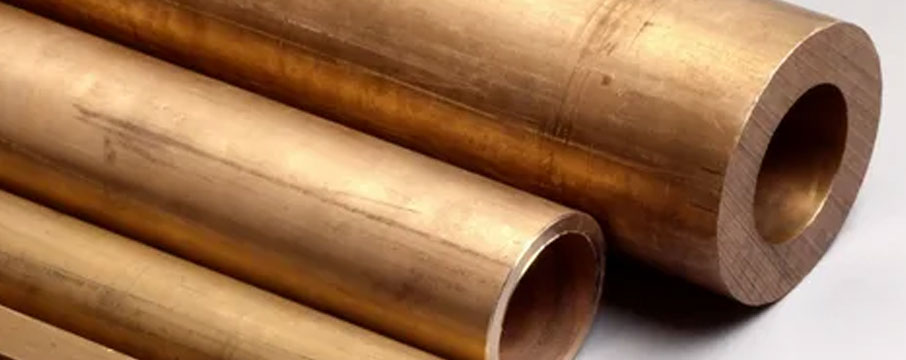
Nickel Bronze Vs Phosphor Bronze
Copper makes up the majority of the content of the bronze family of copper alloys. In comparison to phosphor bronze, which contains less nickel, nickel bronze has a higher nickel content of up to 30%. In comparison to nickel bronze, phosphor bronze has higher stiffness and wear resistance. Both of these materials are used in a variety of sectors, primarily in the production of musical instruments like guitar strings. The bronze's flexibility makes it suitable for usage in these many applications.
The core metal is shielded from further corrosion by the surface oxide development. Its distinctive bronze colour is also a result of the copper oxide layer that develops on the surface. The hue and tone vary slightly depending on whether nickel or phosphorus have been added. The materials have a density that is roughly 10% lower than typical stainless steels. They are hence simple to fabricate, cut, mould, and machine. Additionally, the material conducts electricity more efficiently than stainless steel.
The melting point of phosphor bronze can reach up to 1060 degrees from 930 degrees Celsius, but the melting point of nickel bronze ranges from 1060 to 1075 degrees Celsius. Nickel bronze hence naturally has a wider variety of melting points. The melting points vary depending on the particular proportions of chemical composition, although the nickel bronze classes have larger melting point ranges. Because they have lower melting points than stainless steels, bronze materials can be produced more quickly.
In the past, bronze materials were utilised to create sculptures and other forms. Because of its ductility, it is employed in musical instruments and other things. The bronze material is advantageous for creating bushes and bearings because of its low metal-to-metal friction. Bronze materials can be used in sea water and marine industrial applications because of their minimal corrosion to chloride ions.
The materials made of phosphor bronze are less expensive than those made of nickel bronze. The price variance is made possible by the different compositions. However, any unique chemical composition or unusual additives necessitate an increase in production costs. Therefore, if the chemical composition is a distinctive and unique requirement, it may result in higher prices for phosphor bronze. Due to the presence of copper in the composition, bronze materials are often more expensive than stainless steel materials. All copper alloys are expensive because copper itself is.
Composition of PB1 and Pb2 Phosphor Bronze
| LEADED BRONZE / PHOSPHOR BRONZE LB2 / LB4 / PB2 | PB1 PHOSPHOR BRONZE | |||
|---|---|---|---|---|
| MINIMUM | MAXIMUM | MINIMUM | MAXIMUM | |
| Copper | 87 | 89.5 | 87 | 89.5 |
| Tin | 10.0 | 11.5 | 10.0 | 11.5 |
| Lead | 0.25 | 0.25 | ||
| Zinc | 0.05 | 0.05 | ||
| Nickel | 0.10 | 0.10 | ||
| Phosphorous | 1.0 | 1.0 | ||
| Aluminium | 0.01 | 0.01 | ||
| Iron | 0.1 | 0.1 | ||
| Antimony | 0.05 | 0.05 | ||
| Manganese | 0.05 | - | ||
| Sulphur | 0.05 | 0.05 | ||
| Silicon | 0.01 | 0.01 | ||
| Bismuth | 0.05 | 0.05 | ||
| Impurities | 0.05 | - | ||
Equivalent Specifications of Pb2
Equivalent Specifications of Pb1
Pb2 Phosphor Bronze Properties
| YIELD/PROOF STRENGTH | 190 |
|---|---|
| HARDNESS | 120 |
| TENSILE STRENGTH | 400 |
| ELONGATION | 20 |
| MELTING TEMPERATURE RANGE | 831-999 |
|---|---|
| DENSITY | 8.8 |
| THERMAL CONDUCTIVITY | 45 |
| THERMAL EXPANSION | 19 |
| ELECTRICAL RESISTIVITY | 0.17 |
| RELATIVE MAGNETIC PERMEABILITY |
| GRADE | RELATED GRADES |
|---|---|
| PB102 |
CW451K / C51000 |
| PB104 |
CW453K / C52100 |
| PB1 |
CC481K / C91700 |
831-999 °C
| GRADE | DENSITY (G/CMᶟ) APPROX |
|---|---|
| Phosphor Bronze LB2 / LB4 / PB2 | 8.7 |
| Phosphor Bronze PB1 | 8.7 |
| US ENGLISH | METRIC | |
|---|---|---|
| Liquidus - Melting Point | 1930 °F | 1054 °C |
| Solidus Melting Point | 1900 °F |
1038 °C |
| Gravity | 7.530 | 7.53 |
| Electrical Conductivity | 8% IACS @ 68 °F |
0.049 MegaSiemens/cm @ 20 C |
| Electrical Resistivity | N/A | N/A |
| Thermal Conductivity | 24.2 Btu/sq ft/ft hr/°F @ 68 °F |
41.9 W/m @ 20 °C |
| Specific Heat Range | 0.1 Btu/lb/°F @ 68 °F |
419 J/kg @293 °C |
| Magnetic Permeability |
1.320 | 1.32 |
Thermal Expansion Coefficient |
(68-212 °F) 9 10-6 per °F |
(20-100 °C) 15.5 10-6 per °C |
| Elasticity |
16000 ksi | 110000 MPa |
| CU% | AI% | SN% | PB% | ZN% | SB% | P% | FE% | NI% | S% | MN% | SI% |
|---|---|---|---|---|---|---|---|---|---|---|---|
| 78.00 MIN |
10.00- 11.50 |
N/A |
N/A |
N/A |
N/A |
N/A |
3.00- 5.00 |
3.00- 5.50 |
N/A |
3.50 |
N/A |
| Tensile Stress, min | 655 MPa / 95 ksi |
| Brinell Hardness | 208 |
| Yield Strength @ .5% ext under load min | 290 MPa / 42 ksi |
| Elongation in 2 in. or 50 mm min, % | 10 |
| Machinability Rating % | 50% |
| US ENGLISH | METRIC | |
|---|---|---|
| Density | 0.272 lb/in 3 @ 68 °F |
7.53 gm/cm 3 @ 20 °C |

